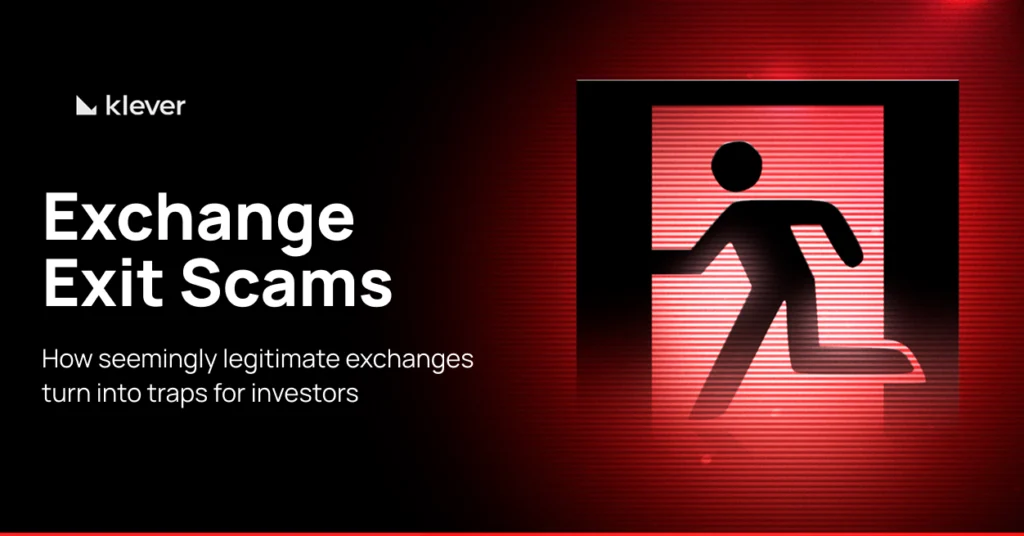
Fake investment platforms have become one of the most frequent and damaging types of online fraud. They imitate legitimate brokerages and crypto exchanges, promise unrealistic returns, and disappear once users request withdrawals.
In this article, you’ll find reliable warning signs, up-to-date data, real cases, and a practical 10-step checklist to help you identify and avoid these traps that continue to deceive thousands of people every year.
What Are Fake Investment Platforms?
A fake investment platform is a fraudulent website or app that claims to offer trading in crypto, forex, stocks, commodities, or AI trading bots — but is designed solely to steal deposits, harvest personal information, or both.
Common characteristics
- Promises of high or fixed returns
- Fake dashboards mimicking real exchanges
- Locked or blocked withdrawals
- Requests for “fees” or “taxes” before releasing funds
- Sudden disappearance after large deposits
- Impersonation of influencers, analysts, or AI trading bots
- Use of deepfake ads and fabricated endorsements
These patterns align directly with the top global complaints reported between 2024 and 2025.
How Fake Investment Platforms Really Operate
Understanding how these schemes work is essential to spotting them quickly. Below is a breakdown of how most fraudulent trading sites deceive victims from start to finish.
1. Everything Starts With a Fake Trading Dashboard
These scams copy the interface of well-known exchanges (such as Binance, Coinbase, MetaTrader, or TradingView) to create the appearance of a professional environment.
Victims see charts moving, balances increasing, and “profits” appearing in real time — but none of it is real.
No actual trades happen; the numbers are fabricated solely to convince users their money is growing.
2. They Use Social Engineering to Attract Victims
These platforms almost never gain users organically. Instead, scammers approach people on Instagram, WhatsApp, TikTok, Telegram, Facebook, and even dating apps.
They pose as “mentors,” supposed experts, AI bot programmers, or even romantic interests.
The strategy is always the same: build trust, create urgency, and push the victim to deposit money.
3. They Collect KYC Documents to Use in Other Crimes
To appear legitimate, these sites demand full verification: a government ID, a selfie, and proof of address. The real goal is to use this data in new scams, open bank accounts or exchange accounts under stolen identities, and bypass compliance checks.
This KYC harvesting is one of the reasons these scams cause long-term damage even after the victim stops depositing.
4. They Create “Deposit Traps” to Build False Trust
At first, scammers encourage small deposits and may even allow a tiny withdrawal or an instant “profit.” This small gain acts as proof of legitimacy.
Once the victim believes the platform is real, pressure starts for larger deposits — and that’s when withdrawals suddenly stop working.
5. They Block Withdrawals With Fake Fees and Invented Excuses
When the user finally tries to retrieve their money, obstacles appear: “liquidity fee,” “compliance fee,” “withdrawal tax,” or charges to “unlock VIP access.”
None of these exist on legitimate platforms. These barriers are designed to extract more money until the victim realizes it’s a scam.
6. They Disappear and Reappear Under a New Name
When too many victims complain or stop sending funds, the operators shut the site down.
The domain usually goes offline, redirects to another scam, or the scammers reappear with a new brand, new layout, and new social media accounts.
This cycle repeats endlessly — which is why checking domain age is crucial when evaluating an investment platform.
Why Fake Investment Platforms Are Growing?
Fake investment platforms have become one of the most common and damaging types of financial fraud. They imitate real brokerages and crypto exchanges, promise easy profits, create convincing dashboards, and disappear once users try to withdraw funds.
According to the Federal Trade Commission reports that investment-related scams remain the #4 fraud type in the U.S., and in 2024 victims who reported losing money had a median loss of over US $9,000.
Several factors explain the explosive growth:
- High demand for quick-profit investments amplifies susceptibility.
- Social media platforms act as easy recruitment channels.
- AI-generated content (deepfakes, fake dashboards, fake support agents) makes scams more believable.
- Cross-border anonymity makes scammers harder to track.
- Crypto payments allow funds to be moved instantly and irreversibly.
Together, these drivers make fake investment platforms a global
10 Real Examples of Fake Investment Platforms
1. “EliteTrader-FX”
Promised “guaranteed daily profits” in crypto and forex using fabricated charts and fake support agents. It blocked withdrawals unless victims paid a supposed “liquidity fee.” The scam was identified by the FCA after the operators cloned a licensed firm.
2. “CryptoXchangePro.io”
Attracted victims through Instagram “mentors” and released small initial profits to build trust. After larger deposits, the platform simply vanished. ASIC removed the site after linking it to a Southeast Asian scam hub.
3. “NovaInvestCapital”
Promoted “risk-free AI trading” and demanded a “withdrawal tax” to release funds. It was tracked by the FTC following multiple complaints and the discovery of cloned sites using the same template.
4. “BitMiningFarm Global”
Offered cloud-mining packages with completely fabricated hash rates. It paid only in the beginning, then stopped processing any withdrawals. Singaporean investigators connected it to earlier mining scams.
5. “QuantumAI TradeBot”
Advertised through deepfake videos of public figures and claimed that “AI never loses money.” It accepted deposits only; withdrawal pages were frozen. The BBC exposed the scheme by tracing identity fraud tied to the domain.
6. “GloryMarketsFX”
Pretended to be regulated in Europe but ran aggressive sales channels on Telegram and used a referral structure with pyramid-scheme traits. It was placed on ESMA’s blacklist for using fake license numbers.
7. “PrimeCoinStake”]
Looked like a staking platform with a fixed 30% monthly APY. All funds sent were routed directly to the scammers’ wallets. The U.S. Secret Service identified the operation through blockchain tracing.
8. “EvoTech Arbitrage”
Lured investors with promises of “risk-free arbitrage.” Later demanded “VIP upgrades” and “maintenance fees.” It was banned by Hong Kong’s SFC after more than US$3 million in reported losses.
9. “RoyalGoldInvest-Ltd”
Pretended to sell investments in gold, forex, and crypto in Brazil, using forged ANBIMA audits and certifications. It was flagged by the CVM for operating financial services without authorization.
10. “TradeCoinHub”
Used the romance + crypto method (pig butchering), manipulating victims through Instagram, Tinder, and WhatsApp. Its interface was identical to other “scam factories.” It became heavily reported in Canada between 2024 and 2025.
Main Red Flags of Fake Investment Platforms
Spotting warning signs early is the best way to avoid investment scams. Fake platforms follow a consistent pattern, and understanding these signals helps you identify a fraud long before any money is lost.
Below are the strongest red flags, each explained in practical terms.
1. Guaranteed Returns or Fixed Profits
Any platform promising “daily income,” “zero-risk returns,” or “fixed monthly profits” is not legitimate.
Real investments fluctuate — guaranteed results are a classic scam tactic.
2. Unsolicited Messages on Social Media
If someone contacts you on Instagram, WhatsApp, TikTok, Telegram, Facebook, or a dating app offering an “opportunity,” it’s almost always a trap.
Legitimate brokers do not recruit clients through private DMs.
3. No Regulatory License Number
Real brokerages must be registered with official financial authorities (CVM, SEC, FCA, ASIC, ESMA).
Scam platforms either show a fake license or none at all.
4. Recently Created Domain
Most fake trading sites are less than 12 months old.
If a platform handling “investments” has a brand-new domain, treat it as suspicious.
5. Fake Reviews or Copied Testimonials
Scammers use fake reviews, AI-generated comments, or testimonials copied from other sites.
Look for patterns like repeated wording, brand-new accounts, or overly positive claims.
6. Delays, Excuses, or “Manual Verification” During Withdrawal
Withdrawal problems are the strongest sign of a fake platform.
Scammers will:
- Delay the request
- Claim “network congestion”
- Say “your account must be upgraded”
- Request more deposits to release your money
A real broker never blocks client withdrawals.
7. Pressure to Deposit More Money
Scammers use urgency tactics:
- “Limited spots”
- “Flash bonuses”
- “Deposit today for higher returns”
This psychological pressure is designed to make you act before thinking.
8. Deepfake or Fake Celebrity Endorsements
Fake platforms often use AI-generated videos of entrepreneurs, CEOs, actors, or influencers claiming to “endorse” the platform.
If a platform relies on celebrity hype, it’s dealing in manipulation — not investment services.
9. Payment Only via Crypto or Wire Transfer
If the platform refuses credit cards or regulated payment methods, it’s a major red flag.
Crypto and wire transfers cannot be reversed, making them ideal for scammers.
10. No Physical Office or Unverifiable Address
Real investment companies have traceable offices, phone numbers, and corporate records.
Scam platforms usually list:
- A fake address
- A coworking space
- An empty lot
- No location at all
If you can’t verify the business, it doesn’t exist.
How to Protect Yourself From Fake Investment Platform Scams
These simple but effective actions drastically reduce your chances of falling victim. Each point is designed for real-world use and optimized for search visibility.
Verify the Platform’s Registration and License
Before depositing anything, confirm whether the company is authorized by a real regulatory body. Check official databases such as the CVM in Brazil, the FCA in the UK, the SEC in the U.S., ASIC in Australia, or ESMA in Europe. If the company’s name doesn’t appear in these registries, don’t risk your money.
Research the Domain and the Company’s Background
Look into the domain’s age, registration number, physical address, and the identities behind the operation. Legitimate companies have a verifiable history. If you can’t confirm these details from independent sources, treat the platform as unsafe.
Be Skeptical of Any Promise of Guaranteed Profits
If a site promises fixed daily income, risk-free trades, a “perfect AI,” or guaranteed monthly returns, that’s a major red flag. Real investments never offer guarantees — especially in finance and crypto.
Ignore Unsolicited Messages on Social Media
A large portion of scams begins with unexpected outreach from supposed mentors, specialists, or traders. If you didn’t look for the opportunity, don’t engage. This is one of the most common hooks used to manipulate victims.
Check Real Reviews and Complaints
Look for reports on Reddit, Trustpilot, ScamAdviser, complaint forums, and news outlets. If multiple people mention blocked withdrawals, invented fees, or fake dashboards, that’s more than a warning — it’s a reason to avoid the platform entirely.
Never Pay Fees to “Unlock” Your Money
Scammers create bogus charges such as liquidity fees, compliance costs, withdrawal taxes, VIP upgrades, or maintenance fees. Legitimate platforms never require extra payment to release money that already belongs to you.
Use Trusted Payment Methods
Websites that only accept crypto, bank transfers, gift cards, or unknown links should be avoided. These methods offer no reversal. Reliable platforms always provide secure, recognized payment options.
Choose Self-Custody for Storing Cryptocurrencies
If you invest in digital assets, keep your coins in a self-custody wallet where you control the private keys. This significantly reduces the risk of losing funds to fake custodial platforms.
Trust Your Instincts: Pressure Is a Form of Manipulation
If someone insists that you must invest “today,” “right now,” or claims there are “limited spots,” that’s emotional pressure. Scammers rely on urgency — never transparency.
How to Stay Safe from Fake Investment Platform Scams
Staying protected begins with knowing how these scams operate. Fake platforms depend on urgency, perfect-looking dashboards, and promises no legitimate investment would ever make. When you slow down and verify details — licenses, withdrawal history, company information — most traps become obvious.
Protecting your money also means keeping control of your assets. Using secure self-custody tools like Klever Wallet, where you hold the private keys, removes a major risk because scammers can’t freeze or access what you store independently.
A few simple habits make you a much harder target. If an offer feels rushed, flawless, or pressure-filled, pause and double-check. Caution — combined with the right tools — is your strongest defense.




